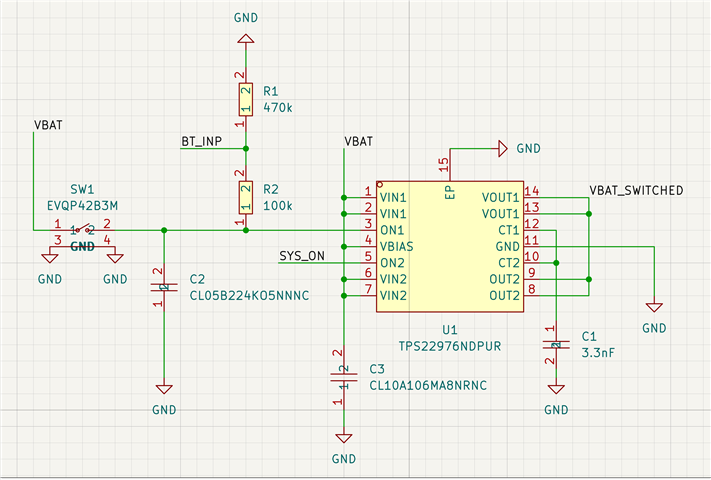Hey TI,
we have a very small battery operated device, that will be powered by a small Li-Ion battery with a voltage from 3,3V up to 4,2V.
We want to use a button to turn the device on, than the device will be held on by a GPIO of a microcontroller for the duration the device is being used.
In the past we had an OR-Gate and a single channel load switch. In order so reduce the space needed on our PCB, we decided to go with the TPS22976N instead of the OR-Gate + Loadswitch.

SW1 will apply VBAT (3,3V up to 4,2V) to ON1. The load switch will turn on, VBAT_SWITCHED will feed to a LDO to turn the MCU on.
SYS_ON will be pulled HIGH up to 3,3V by the MCU. The button gets released and Channel 1 will turn off, while Channel 2 will carry the current.
I have chosen the Version of the TPS22976N that has NO output discharge, so it should be ok to tie channels together as back feeding is not possible VIN>=VOUT.
All capacitors are MLC and rated for at least 25V.
Can this be done?

